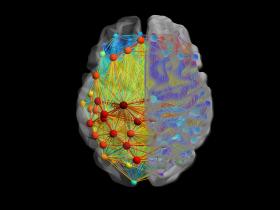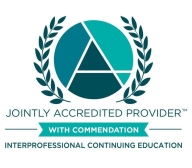
0362_Sutter Neurosciences Grand Rounds_Transient Neurological Symptoms in the Elderly_Live
Overview
Description:
Up to 70% of transient neurological symptoms without acute cerebral infarction have underlying causes that mimic the signs but are distinct to transient ischemic attacks (TIA) and are therefore called TIA mimics. These mimics need to be properly distinguished from a potential TIA for initiating the correct therapy for the patient, but also because a mistaken initiation of secondary prevention therapies can yield potentially serious therapeutic consequences.
Many patients, especially older adults, present to their primary care physicians, urgent care centers, and emergency rooms because of neurologic symptoms lasting seconds to hours. Their problems can be a cause for concern and a challenge to diagnose, as in many cases their symptoms have returned to baseline by the time of evaluation. Understanding the causes of transient neurologic syndromes, their phenomenology and pitfalls, cognitive biases, and system factors leading to false-positive diagnoses that may pose harm can help the clinician diagnose, triage, and treat such conditions effectively. This Grand Rounds session will compare and contrast several transient neurologic syndromes vs. transient ischemic attack (TIA) mimics so as to enhance diagnostic accuracy in elderly patients.
Target Audience
Physicians (MD or DO)
Learning Objectives
After completion of this course, learners will demonstrate the following competencies related to Nerve Transfer Surgery:
1) Review and discuss the epidemiology of transient neurological symptoms vs. TIA.
2) Describe neurological entities unique to the older adult/geriatric population, to be differentiated from TIA/ischemic stroke.
3) Appraise the cognitive biases and system factors that often lead to false-positive diagnoses of TIAs as well as the potential for harm from misdiagnosis.
Program
Assembly Bills 1195 & 241- Culturally Appropriate Care which is Free of Implicit Biases:
Learners are strongly encouraged to engage in self-directed learning related to the impact of implicit biases in this clinical area via the references provided below:
- Tarnutzer, A. A., Lee, S. H., Robinson, K. A., Wang, Z., Edlow, J. A., & Newman-Toker, D. E. (2017). ED misdiagnosis of cerebrovascular events in the era of modern neuroimaging: a meta-analysis. Neurology, 88(15), 1468-1477. https://www.neurology.org/doi/full/10.1212/WNL.0000000000003814
- Ippen FM, Walter F, Hametner C, Gumbinger C, Nagel S, Purrucker JC, Mundiyanapurath S. Age-Dependent Differences in the Rate and Symptoms of TIA Mimics in Patients Presenting With a Suspected TIA to a Neurological Emergency Room. Front Neurol. 2021. https://pubmed.ncbi.nlm.nih.gov/33658979/
- Sadighi A, Stanciu A, Banciu M, Abedi V, Andary NE, Holland N, Zand R. Rate and associated factors of transient ischemic attack misdiagnosis. eNeurologicalSci. 2019. https://www.ncbi.nlm.nih.gov/pmc/articles/PMC6529772/
Faculty
Disclosure of Financial or In-Kind Commercial Support & Conflict of Interest
Ken Laxer, a planning team member for this activity, receives speaker fees form SK Life Sciences on the topic of Xcopri which was deemed not relevant to this activity’s topic, thus no mitigation was required.
No one else involved in the planning or presentation of this educational activity have any relevant financial relationship(s) to disclose with ineligible companies whose primary business is producing, marketing, selling, re-selling, or distributing healthcare products used by or on patients. No financial or in-kind commercial support was received to produce or promote this educational activity.
– Provider Designee/Verification: Kerri Maya, PhD(c), MSL, RN, NPD-BC
Accreditation
Accreditation

In support of improving patient care, Sutter Health, is jointly accredited by the Accreditation Council for Continuing Medical Education (ACCME), the Accreditation Council for Pharmacy Education (ACPE), the American Nurses Credentialing Center (ANCC), and the Association of Social Work Boards (ASWB) to provide continuing education for the healthcare team.
Credit Designation Statement
Sutter Health designates this LIVE activity for a maximum of 1.00 AMA PRA Category 1 Credits™ for physicians. Learners should claim only the credit commensurate with the extent of their participation in the activity.
Note to Other Disciplines: AMA PRA Category 1 Credits HOURS™ Continuing Medical Education is acceptable for meeting the continuing education requirements for Pharmacists, Physician Assistants, Psychologists, Registered Nurses, and Respiratory Care Practitioners. For other disciplines, please check with the regulatory board for your discipline to confirm what type of credits meet the continuing education requirements. Continuing education hours for nurses accredited by ANCC, via Joint Accreditation.
Attendance & Credit Claiming
Text the 6-letter attendance verification code to (916) 866-7913 to claim credit.
Available Credit
- 1.00 AMA PRA Category 1 Credit™
In support of improving patient care, Sutter Health, is jointly accredited by the Accreditation Council for Continuing Medical Education (ACCME), the Accreditation Council for Pharmacy Education (ACPE), and the American Nurses Credentialing Center (ANCC), to provide continuing education for the healthcare team.
Sutter Health designates this Live activity for a maximum of 1.00 AMA PRA Category 1 Credit™ for physicians. Learners should claim only the credit commensurate with the extent of their participation in the activity.

- 1.00 AMA PRA Category 1 Credit™ Hour(s)
In support of improving patient care, Sutter Health, is jointly accredited by the Accreditation Council for Continuing Medical Education (ACCME), the Accreditation Council for Pharmacy Education (ACPE), and the American Nurses Credentialing Center (ANCC), to provide continuing education for the healthcare team.
Sutter Health certifies this Live activity was designated for a maximum of 1.00 AMA PRA Category 1 Credit™ Hour(s). Non-physicians should claim only the credit commensurate with the extent of their participation in the activity.


 Facebook
Facebook Twitter
Twitter LinkedIn
LinkedIn Forward
Forward